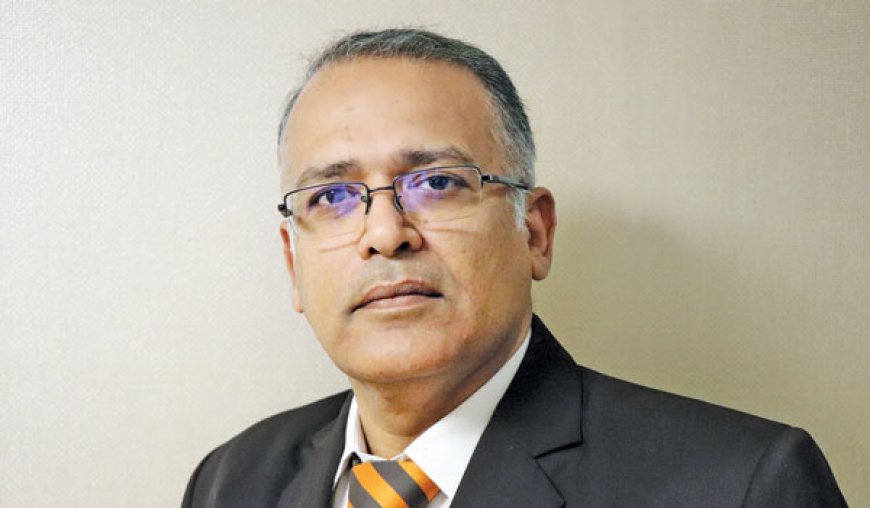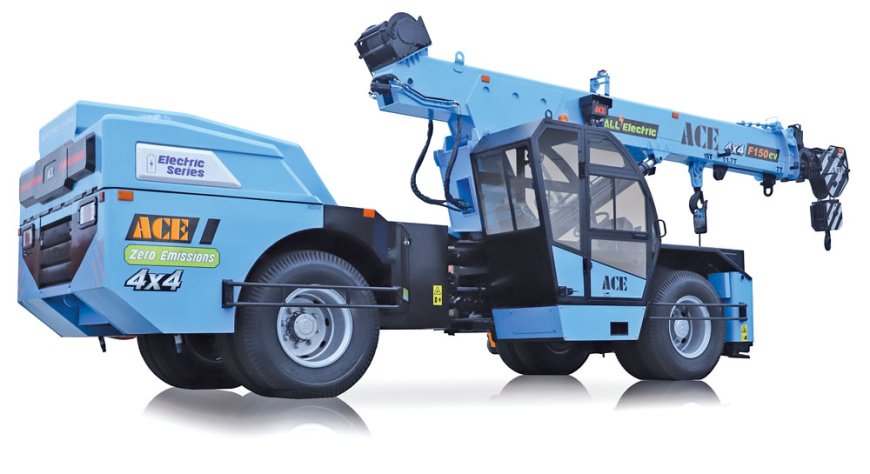I believe that the ongoing infrastructure push will significantly shape the next decade.

How do you look at the market for construction Equipment post interim-budget?
The budget presents a positive outlook, especially considering its interim nature. The certainty of the initiatives announced remains unclear, however, there is a high probability of the current Government’s determination to carry them out. We anticipate continuous momentum through substantial investments in infrastructure and manufacturing sectors. Our business is heavily reliant on both these industries, with 40-50% of our resources dedicated to infrastructure and the remainder tied to manufacturing. Overall, we maintain an optimistic stance and expect a strong Compound Annual Growth Rate (CAGR) of at least 15 to 18% over the upcoming 3-4 years.
Any particular specific budget provision which you believe is directly going to impact your business?
The significant budget allocation to the National Infrastructure Pipeline (NIP) demonstrates a strong commitment towards infrastructure development. Our machineries play an integral role in facilitating infrastructure projects throughout the nation. Regardless of the type of project, our machines are readily available for deployment and execution.


In the long-term perspective, how do you see India as a developing country?
I believe that the ongoing infrastructure push will significantly shape the next decade. Our optimism is fueled by robust activity, especially as China experiences a slowdown, impacting its partnerships with other nations. The acceptance of Indian products is on the rise, presenting substantial export potential. Notably, in regions like Africa, there is a promising market for our older technology BS3 engines, which remain relevant there. Fortunately, the government is actively promoting BS5 norms for construction equipment, effective from January 1. Transitioning to BS5 technology not only positions us well in the domestic market but also makes us competitive in Europe. This presents a lucrative opportunity for export growth.
Furthermore, India itself offers ample potential for infrastructure development, with numerous projects in their initial stages. Despite the competitive landscape, we face serious competition from only a handful of companies, leaving a vast market open for exploration and benefit. Overall, I foresee significant growth, both domestically and in the export market, as we leverage these favorable conditions.
What are your expansion plans globally? Which are the markets?
I am unable to make predictions about the potential impact of BS5 in Europe. The European market is renowned for its strict quality standards and discerning consumers. However, we are optimistic about our prospects in Africa and Latin America. We are actively increasing our presence in these regions and establishing robust network. Currently, we have been exporting to around 30-35 countries.
Any bottlenecks you see from the government’s end as an industry?
One of the main challenges we face is complying with the mandatory registration process for our equipment through the Road Transport Office (RTO). This can be particularly burdensome when our RTOs are not universally applicable across India. The infrastructure sector, in particular, is significantly affected by this requirement.
To illustrate, let us consider a scenario where a company constructs a bridge within 1-3 years. After this time period, if they need to relocate our equipment from one state to another, they are obligated to pay RTO taxes again. This taxation process creates a major bottleneck as each movement and transition to a different state incurs varying tax rates. These rates typically range from 6-7% of the machine’s cost. As such, consistently paying these high taxes poses a considerable constraint for industry players.
Despite concerted efforts by the industry and a draft law in place, progress on this matter has been hindered due to the emergence of the Covid-19 pandemic. To date, the government has not put forward a viable resolution to tackle this issue. Another obstacle we are currently facing pertains to our electric equipment, specifically our fully electric model - “ACE F150ev electric crane”. Unfortunately, sales for this innovative product have been impeded as the government has yet to establish the necessary regulations for its registration with the RTO. This absence of established guidelines has greatly affected our ability to bring this environmentally-friendly solution into the market.

Why do you think is the government asking to produce more electric products?
Despite their expressed interest, the necessary norms for compliance have not yet been provided to us despite repeated inquiries. The registration of our machines is crucial for their utilization in various industries, as there is widespread interest in these environmentally responsible and carbon footprint-reducing machines. However, despite our efforts, including through Indian Construction Equipment Manufacturers Association (ICEMA), we have faced challenges in obtaining registration. We have raised this issue with various ministries and forums, but concrete progress has yet to be made. This inability to register is hindering our ability to sell these machines in the market.
What are the skilling initiatives you have taken?
We have commenced the expansion of our training efforts to maximize our utilization up to 50%, and this phase is currently underway. Our current training facility is well-equipped and affiliated with Vishwakarma Skill University in Faridabad. Our focus is on training operators, mechanics, and electricians, providing certificates upon successful completion of a rigorous 1-3 month program. The training includes theoretical lessons and practical experience with machinery, supported by well-structured models.
Despite our reputable establishment, the enrollment figures have not met our expectations. To tackle this issue, we have increased our capacity to accommodate 50 to 100 students, offering free housing and meals. Nevertheless, attracting students to enroll remains a significant hurdle, despite the prevailing unemployment scenario.
Final words to add up to overall perspective of the industry?
The construction equipment industry is currently in a highly positive phase, indicating a bright future ahead. Let me offer a different viewpoint: in the near future, possibly within the next 10 to 20 years, there is a strong chance that we could become the next China in terms of the size of our operations. For example, let’s take tower cranes—an essential product in our range. Currently, our market size stands at 1000 units. In comparison, China has close to 100 companies involved in tower crane manufacturing, with the top companies producing an impressive 11,000 machines at their peak. Despite this, our total market share remains below 1000 units.









